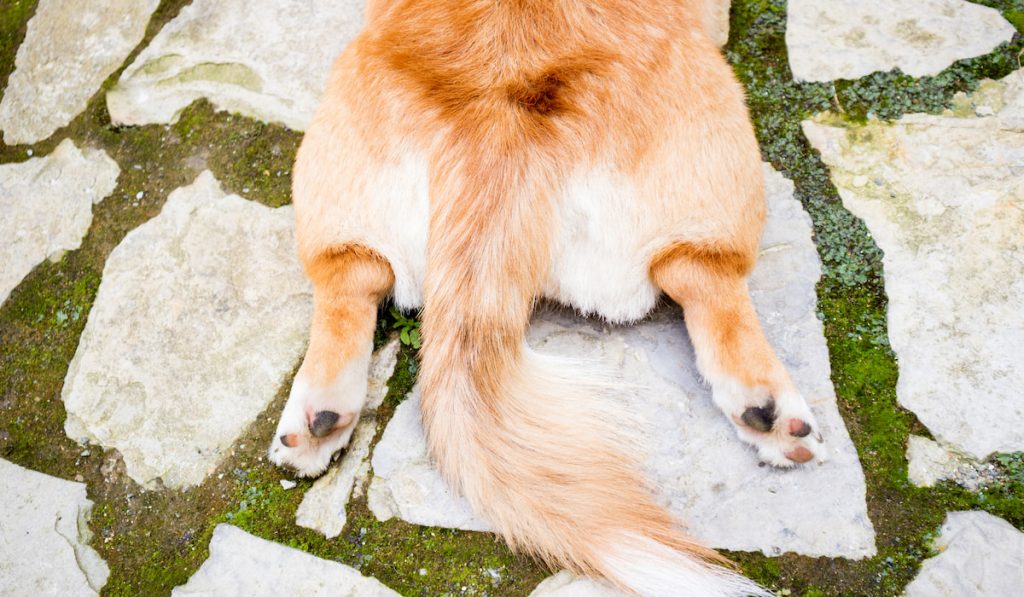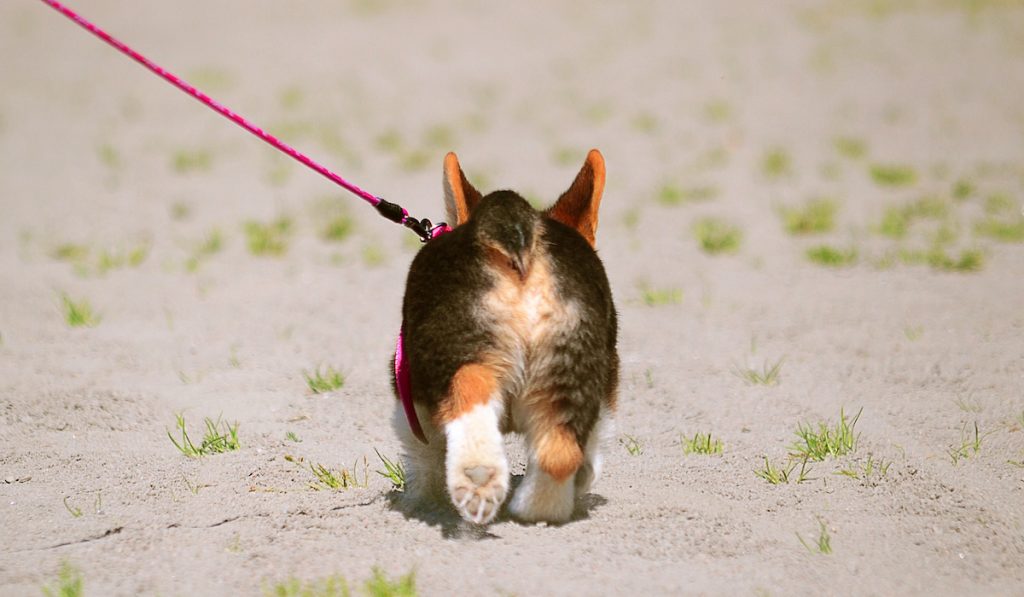Beyond having short legs and elongated bodies, corgis are known for not having a tail.
But are they actually born with tails or without them? Let us find out.
Are corgis born with tails?
More times than not, corgis are born with tails. However, less commonly, there are those born with a natural bobtail.
Tailed Pembroke Welsh Corgis typically have their tails docked 2-5 days after they are born. On the other hand, the tails of Cardigan Corgis are untouched.

If you have always gone with the story that all Pembroke Welsh Corgis are born with a natural bobtail, you certainly want to know more about the fate of their tails.
Lucky for you, the rest of this article answers various questions about the tail of a Pembroke Corgi.
Are Corgis Born With Tails?
Most corgis are born with tails. But in rare cases, you may come across naturally bobtailed corgis. Among the Pembroke Welsh Corgis born with tails, most have their tails docked a few days after birth.
The tail of a Pembroke Welsh Corgi is docked for various reasons, and we shall discuss them as we go on. But keep in mind that it is not impossible to find Pembroke Welsh Corgis with their tails intact.
Interestingly, unlike Pembroke Welsh Corgis, Cardigan Corgis get to keep their tails. So, you may only see a Cardigan Corgi without a tail if it is naturally bobtailed.
Why Are Corgi Tails Docked?
So, why do breeders dock the tails of corgis?
1. Herding
In the past, corgis were popularly used to herd livestock. But in these times, you are unlikely to find them being used as herders.
Because of their use in herding, it was thought that a long tail could be a burden or a liability. The assumption was, that given the short stature of corgis, it would be easy for cows to stomp on their tails during herding.
However, recent pieces of evidence have disproved this assumption.
For one, corgi tails are curled upwards – away from the ground. So, it is less probable they would get stomped on.
2. AKC Standard
The AKC standard states that a Pembroke Welsh Corgi has no tail. However, if a Pembroke Corgi is naturally bobtailed, then the standard requires that the tail be no longer than two inches.
Interestingly, there is a notion dating back to the ancient Romans that tail docking keeps dogs from getting rabies.
Of course, this is not true. Rabies is transmitted when the virus from an infected animal gets into the bloodstream of a dog.
To uphold the American Kennel Club (AKC) standard and to be eligible to participate in AKC sanctioned events and shows, many registered Pembroke Welsh Corgis breeders dock tails.
For others not involved in showing and competing, conforming to the requirements of the AKC helps attract buyers and enables them to charge higher prices.

3. Some Have a Natural Bobtail
As we already mentioned, a small proportion of corgis are born with natural bobtails.
The UC Davis School of Veterinary Medicine posits that a mutation in the T-box gene is responsible for bobtails.
According to the school, a dog only needs one copy of the mutated T-box gene to produce a natural bobtail.
Also, both male and female dogs inherit the gene, and the rate of bobtail production is about the same in both sexes.
Does Tail Docking Hurt Corgis?
There is no absolute answer to this question yet. Those who support tail docking say the process is not painful in newborn corgis because their nervous system is not fully developed.
On the other hand, those who oppose it say that even the young nervous system of newborn corgis will perceive pain like adult dogs.
So far, there have been no irrefutable pieces of evidence to back either claim. Nonetheless, there are reports that corgi puppies shriek, screech, or squeal during the docking process to express pain.
Interestingly, when tail docking is done on a sleeping puppy, it does not wake up from the pain. Then again, some puppies cry in the days after the docking process.
All in all, it appears that most puppies are not affected by the process in the years after. Still, many owners are against the procedure, and in some countries, tail docking is banned.

Is Tail Docking Banned in the US?
Even with many people against it, tail docking is not banned in the US. It is also not restricted in Canada.
However, it is banned in many places in the world. Countries like the United Kingdom, Australia, and most parts of Europe have placed restrictions on tail docking.
More times than not, buyers look forward to having a corgi registered with the AKC. This may be one reason why corgi tail docking has persisted in the United States.
It should be stated that while tail docking is not banned in the US, the American Veterinary Medical Association (AVMA) does not support it.
How a Corgi’s Tail Is Docked
There are two main methods of docking the tail of a corgi. However, none of them involves the administration of anesthesia or painkillers.
The first and most popular method involves removing the tail by cutting. This method is pretty straightforward.
The tissues in the tail are severed and removed, the wound is cleaned, and the remaining skin is sutured together neatly. Once healed, little to no evidence of a longer tail remains.
The other method involves cutting the blood supply to the tail by winding a rubber band around it tightly.
With time, the tissues at the point of attachment of the rubber band will die. Then the part below the band will fall off.
The remaining tissue heals and grows fur just as the rest of the dog’s coat does. The younger the tissue, the shorter amount of time this process takes.
Final Thoughts
An overwhelming majority of corgis are born with tails. At the same time, there are a few that have natural bobtails at birth.
For Pembroke Welsh Corgis, however, the tail is typically short-lived as it is docked within a few days after they are born.
Conversely, Cardigan Corgis get to keep their tails – if they are born with one.
